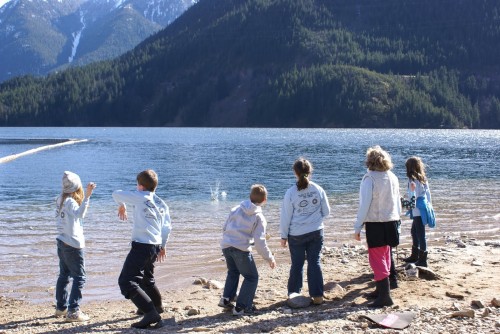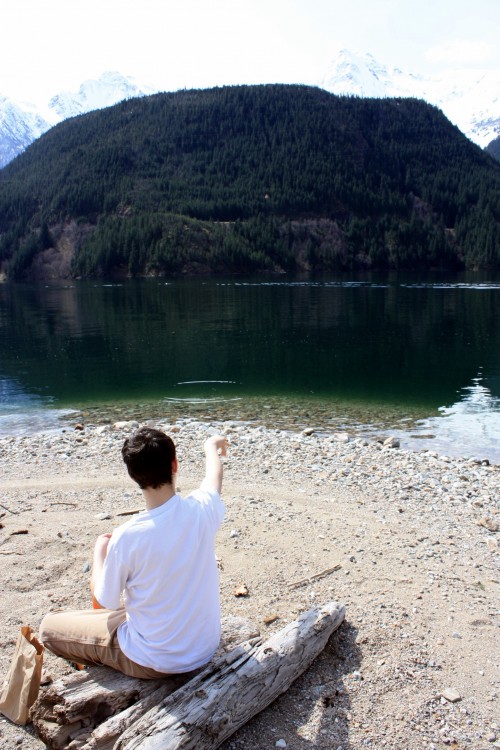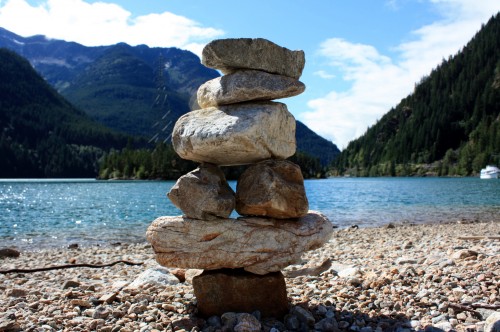Rockity Rock Rock
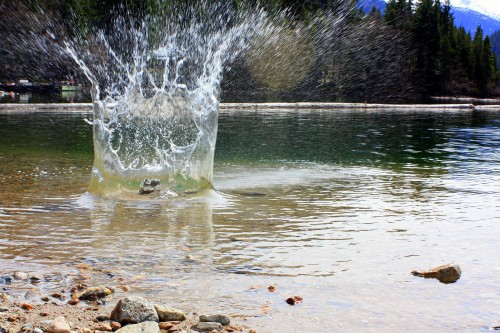
Why is it that kids, and adults, truth be told, love throwing rocks? Nearly every Mountain School student spends some time learning and exploring along the shores of Diablo Lake. And without fail (for my trail groups at least) the first question we hear as soon as we get to the shore is, “Can we throw rocks?” Although our packed schedule usually only allows for 5-10 minutes of rock throwing, I’m fairly certain my students would happily spend the entire afternoon engaged in this timeless pursuit. Thrown, plopped or skipped, every student becomes engrossed in this activity.
One lovely, sunny afternoon, as I sat below Sourdough Creek Falls and watched my students gradually start tossing rocks across the creek after lunch, I couldn’t help but wonder, what is it about throwing rocks that is so captivating? Is it the sound? The splash? The hunt of finding the perfect skipping rock? Or the challenge of successfully hitting a target?
Mountain School students see how far they can skip rocks across the lake. Photo courtesy of Glenda Runge 
A student tosses a rock into Diablo Lake.
I’m sure there is no single answer. But it is clear to me that there is some kind of inexorable magnetism between kids, rocks and water. If I allow my students the time, they inevitably move beyond simply throwing rocks and become landscape architects. Sourdough Creek has a high rate of natural flux, or catastrophism. Last December, a significant amount of rain fell over a short period of time and melted the high-mountain snow. This rain-on-snow event resulted in a flood that restructured the area around Sourdough Falls, closed off the parking lot for a day and added more raw material to the rocky spit where the creek enters Diablo Lake. This catastrophism means there are always logs freshly washed downstream to construct miniature dams at the falls, and plenty of rocks and driftwood on the lakeshore to build shelters, mountains and Andy Goldsworthy-esque creations.
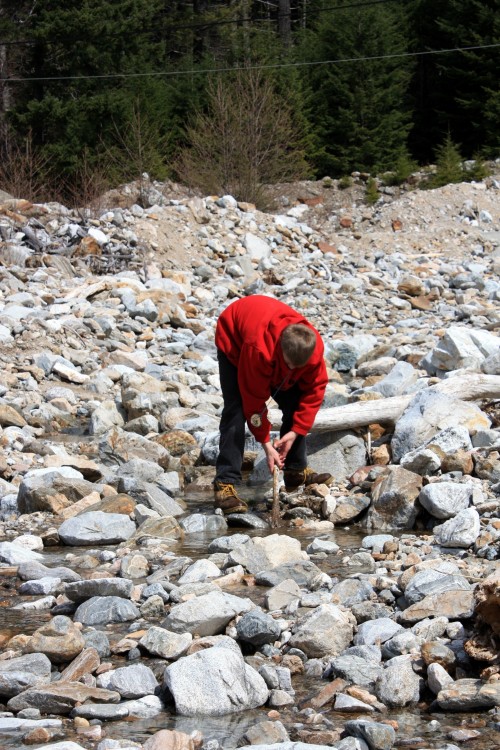
A student engineers the trickle of Sourdough Creek.
Educator David Sobel writes about the importance of enabling children to have this kind of less-structured nature play, especially at a time when young people spend less and less time outdoors:
This erosion of childhood concerns me. Computers seem like a river in flood, washing away the soil that roots children to the natural world. Elementary-age children, now more than ever, need opportunities to be in their bodies in the world, jump roping, bicycling, stream-hopping, and fort-building. It’s in this engagement between the limbs of the body and the bones of the earth where true balance and centeredness emerge. (Childhood and Nature: Design Principles for Educators)
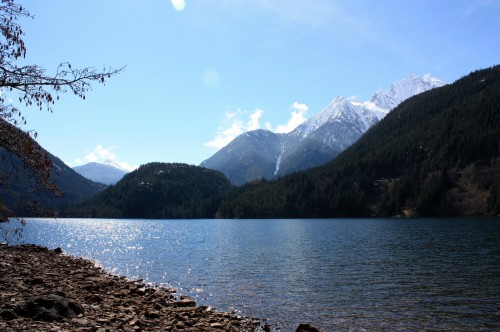
Sunlight shimmers on the waters of Diablo Lake.
Although most Mountain School students visit the North Cascades Environmental Learning Center for three days, their short time here is a unique opportunity for their nature creativity and curiosity to take flight. As instructors, our hope is that their time spent poking around the base of a waterfall or shore of a lake will stay with them, and when they return home, they will be motivated to continue exploring and creating in the natural world where they live. For myself, one of the primary reasons I find myself pursuing a Masters in Environmental Education and working to inspire as many people as possible in the wonder of the natural world is the time I spent as a child building forts, climbing trees, and reenacting My Side of the Mountain and the Laura Ingalls Wilder books. Even though I have finally started accepting the fact that I am an adult in some ways, I would still happily spend an afternoon playing with rocks.


